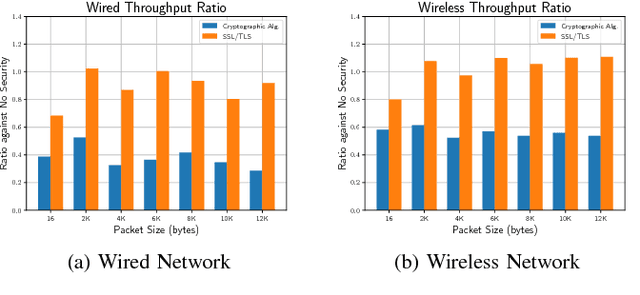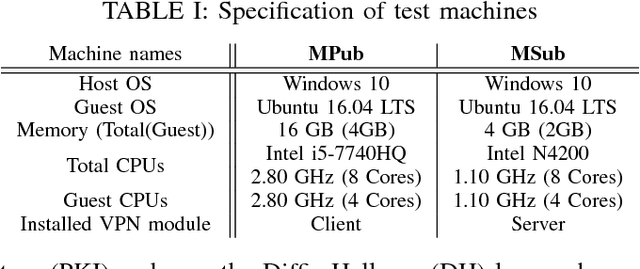Jongkil Kim
Security and Performance Considerations in ROS 2: A Balancing Act
Sep 24, 2018



Abstract:Robot Operating System (ROS) 2 is a ground-up re-design of ROS 1 to support performance critical cyber-physical systems (CPSs) using the Data Distribution Service (DDS) middleware. Accordingly, the security of ROS 2 is highly reliant on the security of its DDS communication protocol. However, finding a balance between the performance and security is non-trivial task. Inappropriate security implementations may cause not only significant loss on performance of the system, but also security failures in the system. In this paper, we provide an analysis of the DDS security protocol as well as an overview on how to find the balance between performance and security. To accomplish this, we evaluate the latency and throughput of the communication protocols of ROS 2 in both wired and wireless networks, and measure the efficiency loss caused by the enabling of security protocols such as Virtual Private Network (VPN) and DDS security protocol in ROS 2 in both network setups. The result can be directly used by robotics developers to find the optimal and balanced settings of ROS 2 applications. Additionally, we analyzed the security specification of DDS using existing security standards and tested the implementation of the DDS protocol by performing static analysis. The results of this work can be used to enhance the security of ROS 2.
 Add to Chrome
Add to Chrome Add to Firefox
Add to Firefox Add to Edge
Add to Edge